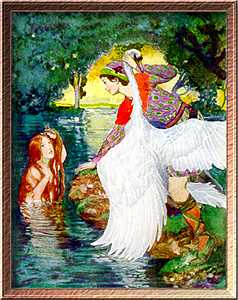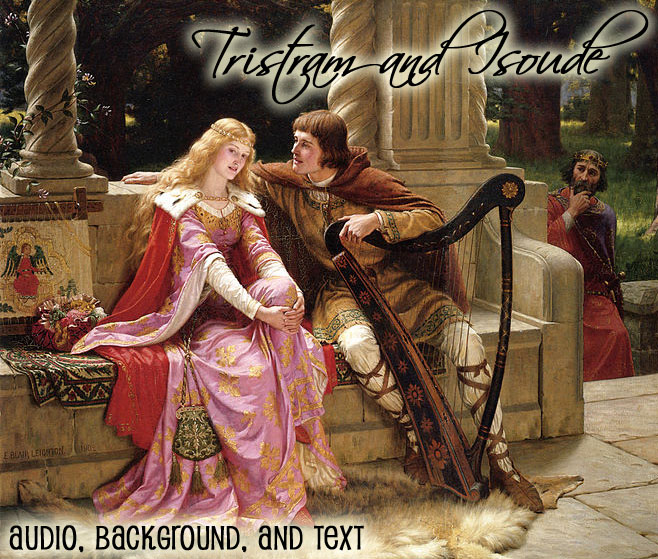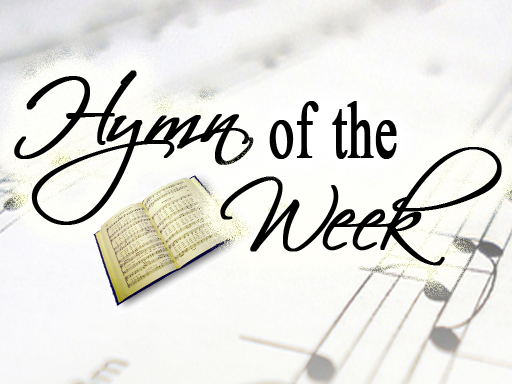A Christmas Carol
Author: Charles Dickens, 1812-1870
Genre: Classic, 19th Century Story
Reading Time: approx. 3 hours
Audio Recording:
This audio, A Christmas Carol (Version 8 Dramatic Reading), can be found on Librivox. You can download a zip file of the recording in its entirety, or visit StoryNory for a dramatic retelling for children (38 minutes total for 3 parts).
Audio clip: Adobe Flash Player (version 9 or above) is required to play this audio clip. Download the latest version here. You also need to have JavaScript enabled in your browser.
Audio clip: Adobe Flash Player (version 9 or above) is required to play this audio clip. Download the latest version here. You also need to have JavaScript enabled in your browser.
Audio clip: Adobe Flash Player (version 9 or above) is required to play this audio clip. Download the latest version here. You also need to have JavaScript enabled in your browser.
Audio clip: Adobe Flash Player (version 9 or above) is required to play this audio clip. Download the latest version here. You also need to have JavaScript enabled in your browser.
Audio clip: Adobe Flash Player (version 9 or above) is required to play this audio clip. Download the latest version here. You also need to have JavaScript enabled in your browser.
Background:
Charles John Huffam Dickens was born in England to John Dickens and Elizabeth Barrow. Though Dickens’ paternal grandparents were servants, “their position in the household of a rich landowner was a senior one which gave [Dickens’ father] many advantages, some of which may have been damaging to his future;” essentially, Dickens’ father became acquainted with a life that “made him feel that he himself was a gentleman, occupying a higher social position than he was fated to inhabit.”1
Dickens’ father began a career at the Navy Pay Office and was introduced to Elizabeth Barrow through a friend at work. The couple fell in love, married and had eight children; Charles was the second born, and his childhood appears to have been a happy one. He was initially educated by his mother who, by all accounts, was a lively person and an imaginative storyteller, and though Charles’ father was a committed family man, he was also financially careless. He tried to live a lifestyle that he could not afford, and by 1823, the family finances were in crisis.
A defining moment for Dickens came in 1824 when at age 12 he was sent to work in a factory. His job consisted of sticking labels on bottles of shoe polish. Shortly thereafter, his father was imprisoned for debt. For lack of other options, the rest of the family (except Charles) joined him in prison. With the little money that Charles earned during his long days at work, he was able to rent a room and provide some money to his family. According to his biography in the Literary Encyclopedia:
“There is no doubt that this experience had the most profound effect on Dickens’ character and inner life. The disruption of his family, his expectations of being properly educated, his sense of himself as destined for some kind of respectable job and position in society were all swept aside in the degradation of being reduced to the status of a little labourer.”2
During this time, “the seeds of ambition were sown,” and Dickens determined “never to share the fate of his father.”3 He also developed a deep compassion for others, particularly lost or aban-doned children, who were often left to work in the dreadful conditions that he experienced first hand. Furthermore, Dickens would carry into adulthood a disdain for anyone who took advantage of others in the pursuit of wealth or power.
Fortunately, after only a few months in prison, Dickens’ father obtained an inheritance and secured his release from prison. But Dickens’ mother did not immediately remove him from his factory work, and he would never completely forgive her for this. Eventually, he was able to return to school, but after only two more years of education, Dickens’ family was evicted from their home for unpaid rent.4 This time, Dickens would enter the workforce permanently at age 15. Luckily, he was able to get a decent job working as a lawyer’s clerk, and in his spare time, he learned shorthand, which later secured him a job as a staff reporter for the Morning Chronicle newspaper. From this point forward, Dickens’ family would often rely on him for financial support.
On his 18th birthday, Dickens acquired a pass to the British Museum, and he began a rigorous program of self-education. He also regularly attended the theater and organized his own amateur productions on the side. This same year he fell in love with Maria Beadnall, but her parents did not approve of him (either socially or financially). Consequently, they sent her off to school in Paris. This was another experience that would profoundly impact Dickens’ writing. According to the Literary Encyclopedia, “It fuelled his determination to succeed while serving as yet another example of how money, class and power made their way into even the apparent privacy of the emotional life.”5 But Dickens did not waste much time mourning. Shortly after “losing” Maria, he met and married Catherine Hogarth and eventually had ten children with her.
Marriage appears to have had a positive effect on Dickens, and his career as a journalist began to expand into more creative writing. Beginning in 1833, he started to publish short essays in news¬papers and magazines under the pseudonym “Boz.” Dickens mainly wrote about lower middle class life in London, and his popular work was first collected and published in 1836 as Sketches by Boz. Dickens’ next project, the Pickwick Papers, was a comic work “concerning the misadventures of a group of urban middle class gentlemen in attempting country pursuits for which they had no skills.”6 The work was published in 19 monthly parts from 1836 to 1837 and turned out to be a phenomenal success. It was one of the best sellers in the history of English literature, and it established Dickens as the most popular writer of his time.
From then on, Dickens began actively producing novels. Most of them were serialized in monthly magazines (meaning that only one chapter would be released at a time), and Dickens had a public who eagerly awaited each installment. Some of the most notable are: Oliver Twist (1837-39), Nicholas Nickleby (1838-39), Martin Chuzzlewit (1843-1844), David Copperfied (1849-50), A Tale of Two Cities (1859), and Great Expectations (1860-61).
Dickens was also widely regarded for the Christmas stories he produced almost every year from 1843 to 1867. The first, and most popular of these stories was A Christmas Carol, reportedly conceived and written in only a few weeks. According to Encyclopedia Britannica, it was “the one great Christmas myth of modern literature.”7 With time, Dickens’ view of life would come to be described as his “Christmas philosophy”8 (the idea that the Christmas spirit of kindness and generosity should prevail throughout the year), and Dickens himself came to be intimately associated with Christmas. According to Encyclopedia Britannica:
“His great attachment to Christmas (in his family life as well as his writings) is indeed significant and has contributed to his popularity. ‘Dickens dead?’ exclaimed a London girl in 1870. ‘Then will Father Christmas die too?’— a tribute both to his association with Christmas and to the mythological status of the man as well as of his work.”9
Dickens’ love for Christmas was probably influenced in part by his affection for children, and in A Christmas Carol, he tenderly wrote, “For it is good to be children sometimes, and never better than at Christmas, when its mighty Founder was a child himself.”
As his own children grew, they began to show interest in theater, and Dickens’ attention returned to his old hobby. By 1851, Dickens was writing, directing, and acting with his children and friends. Often his productions were intended to raise money for those in need.
Dickens’ theater experience gradually led to public readings of his writing, and he proved to be a master of performance. Dickens’ fame as a public reader grew to nearly equal his reputation as a writer, and from 1858 until his death, he completed a number of wonderfully successful tours. According to Encyclopedia Britannica:
“He was a magnificent performer, and important elements in his art—the oral and dramatic qualities—were demonstrated in these renderings. His insight and skill revealed nuances in the narration and characterization that few readers had noticed.”10
One of Dickens most popular readings was A Christmas Carol (for which audiences would sit captivated for three hours). Altogether Dickens performed about 471 times, and as a result, he wrote much less during the last ten years of his life. However, it seems he had discovered his true passion. He loved to see and delight audiences, and he gloried in their admiration. According to Encyclopedia Britannica:
“No important author (at least, according to reviewers, since Homer) and no English author since who has had anything like his stature has devoted so much time and energy to this activity. The only comparable figure is his contemporary, Mark Twain, who acknowledged Dickens as the pioneer.”11
Dickens was just as popular in the United States as he was in his native country of England. His reading tour in America (1867-1868) only served to strengthen the admiration of his many fans and increase his reputation. Sadly, Dickens’ active and demanding performance schedule probably contributed to his early death in 1870, but he died as a dearly loved man on both sides of the Atlantic.
Though Dickens’ writing has been attacked for its sentimentality, even the harshest critics acknowledge his talent. For many, “He is second only to Shakespeare as the greatest English writer” of all time.12 Interestingly, G.K. Chesterton (1874-1936), one of the most distinguished writers of the next generation in England, so highly regarded Dickens’ work that he wrote prefaces for many of them; these were later collected in Appreciations and Criticisms of the Works of Charles Dickens (1911). Dickens’ tombstone in Poet’s Corner of Westminster Abbey, London, succinctly summarizes his life: “He was a sympathiser to the poor, the suffering, and the oppressed; and by his death, one of England’s greatest writers is lost to the world.”13
Sources:
1 Smith, Grahame. “Charles Dickens.” The Literary Encyclopedia. January 8, 2001. Retrieved October 19, 2008: http://www.litencyc.com/php/speople.php?rec=true&UID=5085. Much of the biography for Charles Dickens is drawn from this source.
2 Smith, Grahame.
3 Smith, Grahame.
4 Merriman, C.D., “Charles Dickens.” Biography written for Jalic Inc. Retrieved October 19, 2008: http://www.online-literature.com/dickens/.
5 Smith, Grahame.
6 Smith, Grahame.
7 Encyclopedia Britannica. “Charles Dickens.” Retrieved October 19, 2008 from Encyclopedia Britannica Online: http://www.britannica.com/EBchecked/topic/162141/Charles-Dickens.
8 Encyclopedia Britannica.
9 Encyclopedia Britannica.
10 Encyclopedia Britannica.
11 Encyclopedia Britannica.
12 Smith, Grahame.
13 Merriman, C.D.
*********************
Text of the Story:
Link to Gutenburg.org for text.
*********************
This page was created by:

Back to main Christmas Stories page.
We welcome your ideas! If you have suggestions on how to improve this page, please contact us.
The content for the background is drawn from our Christmas book and has a copyright © 2008 by Angie Mosteller. You may freely use this material if you cite the source and/or link back to this page.






